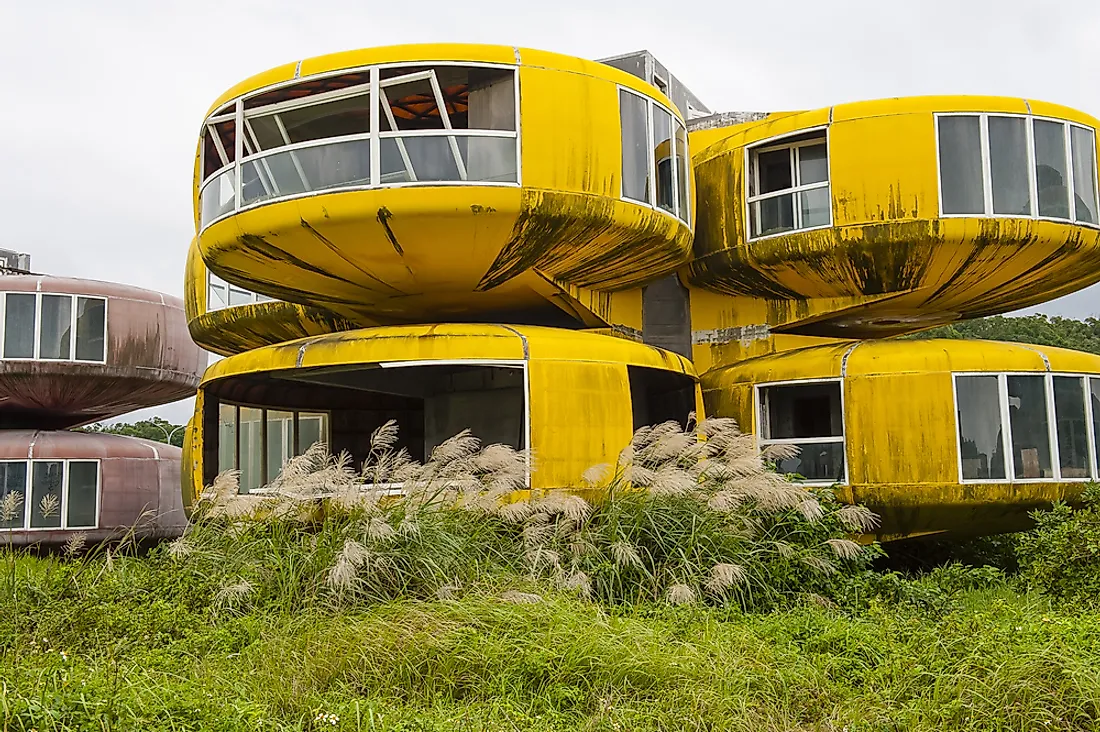Futuro Houses - Futuristic UFO Inspired Living

Futuro Houses- Futuristic UFO Inspired Living
Futuro houses gained popularity in the late 1960s and early 1970s, although fewer than 100 of them were built. Although the construction of Futuro houses once represented hope for technology and the future, they were not popular with consumers and were taken off the market before reaching commercial prosperity. Today, only an estimated 60 of them still exist in various parts of the world, in various different states of condition.
History
The design of the Futuro house was created by Matti Suuronen, a Finnish Architect, in the late 1960s. Finland at that time was experiencing a period of economic growth, which meant that there was an increased time for leisure, which was often spent outside of the home. Matti envisioned a portable home that could adapt to almost any terrain.
Description
Futuro houses were built using fibreglass-reinforced polyester plastic that was placed on four concrete piers for support. A Futuro house consisted of 16 parts bolted together in total to form the floor and roof. The house could easily be assembled and dismantled. A hatch functioned as a door which gave access to an elliptical space complete with a living room, fireplace, bedroom, kitchen, and bathroom. The Futuro house could be heated quickly thanks to the integrated electric heating system and polyurethane insulation. The structure occupied an area of 538.2 square feet and was 26.25 feet in diameter. The house was lightweight.
Commercial Failure
The first of this structure was assembled near Lake Puulavesi in Finland. However, it elicited public outcry as many thought it looked too unnatural for the surrounding rural environment. Futuro houses in the US also met criticism with some towns banning through zoning regulations. Other Futuro houses were vandalized or destroyed. Banks were hesitant to finance their construction. The biggest blow to the houses came in 1973 during the oil crisis, when high gasoline prices increased the cost of manufacturing plastic.
Famous Futuro Houses
A few Futuro houses are exhibited in various parts of the world. One Futuro referenced as no. 001 sits at the WeeGee Exhibition Centre in Espoo, Finland. Another Futuro, with the serial number 000, was a prototype and is displayed at the Museum Boijmans Van Beuningen in Rotterdam. The only Futuro house in the UK is owned by the artist Craig Barnes. Barnes stumbled upon the wreck in South Africa while on vacation and had it restored in the United Kingdom.
Legacy
The Futuro house is known as one of the most unusual architectural designs in history, reflecting the spirit of experimentation and optimism present in the period when it was constructed. A Futuro house is an icon of 1960s and early 1970s space age design and architecture. The Futuro house was launched in the same week that Neil Armstrong walked on the moon and thus contributed to space-related euphoria. The house now exists as a piece of art and is a prized collection for enthusiasts.











